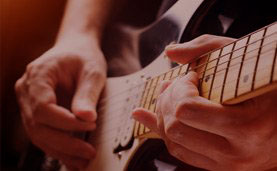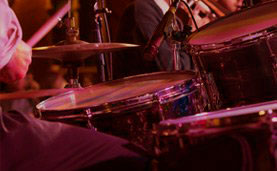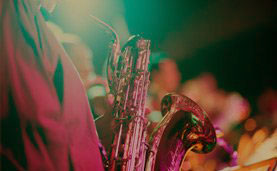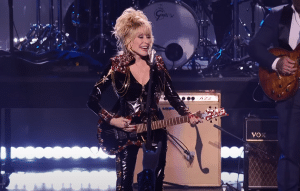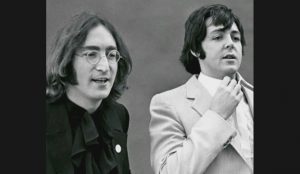Watch Billy Idol Performs “Rebel Yell” On Top Of The Empire State Building

via Billy Idol / Youtube
Perched high above New York City, Billy Idol marked a milestone in rock history with a performance as electrifying as the skyline beneath him. To celebrate the 40th anniversary of “Rebel Yell”, he took to the Empire State Building’s 103rd-floor balcony—a rarely accessed space once intended for airship docking—delivering an intimate acoustic rendition of the album’s title track.
With Steve Stevens by his side, Idol’s raw vocals and signature intensity transformed the narrow ledge into an unforgettable stage. The stripped-down performance brought a fresh perspective to the classic hit, highlighting its anthemic energy even without the full-throttle production that made it famous.
Beyond the moment itself, the performance served as a prelude to the Rebel Yell re-release, featuring remastered tracks, rare recordings, and never-before-heard material. Four decades later, Idol continues to bridge nostalgia with reinvention, proving that some songs—and some artists—only get better with time.
A Stage Above the City
Standing on the Empire State Building’s 103rd floor, Billy Idol wasn’t just performing—he was revisiting a piece of his past. Growing up on Long Island, he had once gazed up at the landmark in awe. Decades later, he stood atop it, blending childhood nostalgia with his enduring rock legacy.
The performance, filmed months earlier, debuted in August to mark the 40th anniversary of Rebel Yell. Idol’s acoustic set wasn’t just a tribute to the album but a moment of full-circle reflection, tying his personal history to his musical journey.
This wasn’t his first bold venue choice. Idol has a history of turning iconic locations into concert stages, including a memorable set at the Hoover Dam. Against the Art Deco backdrop of the Empire State Building, his stripped-down performance felt both intimate and larger than life.
The Album That Ignited a Movement
When Rebel Yell dropped in November 1983, it wasn’t just another rock album—it was a game-changer. Recorded at Electric Lady Studios in New York City, it fused hard rock, New Wave, and pop, creating a sound that defined an era. With tracks like “Eyes Without a Face” and “Flesh for Fantasy”, Billy Idol became a fixture of MTV’s golden age.
The album’s title track had its own rebellious origins, inspired by a bourbon-fueled night with the Rolling Stones. That energy translated into an anthem that soared up the charts, pushing Rebel Yell to No. 6 on the Billboard 200 and earning multi-platinum status. It wasn’t just a hit—it was a cultural statement.
Four decades later, the legacy continues. The 40th-anniversary reissue brings fans unreleased gems like “Best Way Out of Here” and early demos of “Flesh for Fantasy”. More than a nostalgia trip, it’s a testament to Idol’s lasting impact and his ongoing creative partnership with Steve Stevens.
A Drink, a Phrase, and a Song
The story of “Rebel Yell” began at a party with The Rolling Stones. Billy Idol watched as Mick Jagger, Keith Richards, and Ronnie Wood passed around a bottle of Rebel Yell bourbon. The name stuck with him—it felt raw, powerful, and full of attitude. It was exactly what he wanted for a song.
Despite the whiskey’s Southern roots, “Rebel Yell” had nothing to do with the Civil War. Instead, Idol wrote it as a declaration of passion, inspired by his girlfriend, Perri Lister. To him, it was a love song wrapped in rebellion—an anthem about devotion and the strength of relationships. He even called it a “feminist anthem in a weird way.”
New York City’s nightlife added another layer to the song’s energy. Living there in the late ’70s, Idol thrived on the city’s electric pulse—its clubs, its chaos, its endless possibilities. That sense of freedom shaped Rebel Yell, making it not just a song, but a feeling.
A Landmark of Legends
Rising 1,454 feet above New York City, the Empire State Building has been a symbol of ambition since its completion in 1931. Its observation decks on the 86th and 102nd floors welcome millions of visitors each year, while its appearances in films like King Kong and Sleepless in Seattle have solidified its cultural legacy.
Billy Idol’s performance took that legacy even higher—literally. Singing from the rarely accessed 103rd-floor balcony, a space originally designed for airship passengers, he turned the Art Deco landmark into an open-air stage. The breathtaking footage captured both Idol’s timeless energy and the building’s enduring grandeur.
By merging rock history with architectural history, Idol’s Rebel Yell anniversary performance felt larger than life. It was more than a celebration of a classic album—it was a moment that linked generations of artistry, from skyline to soundwaves.

